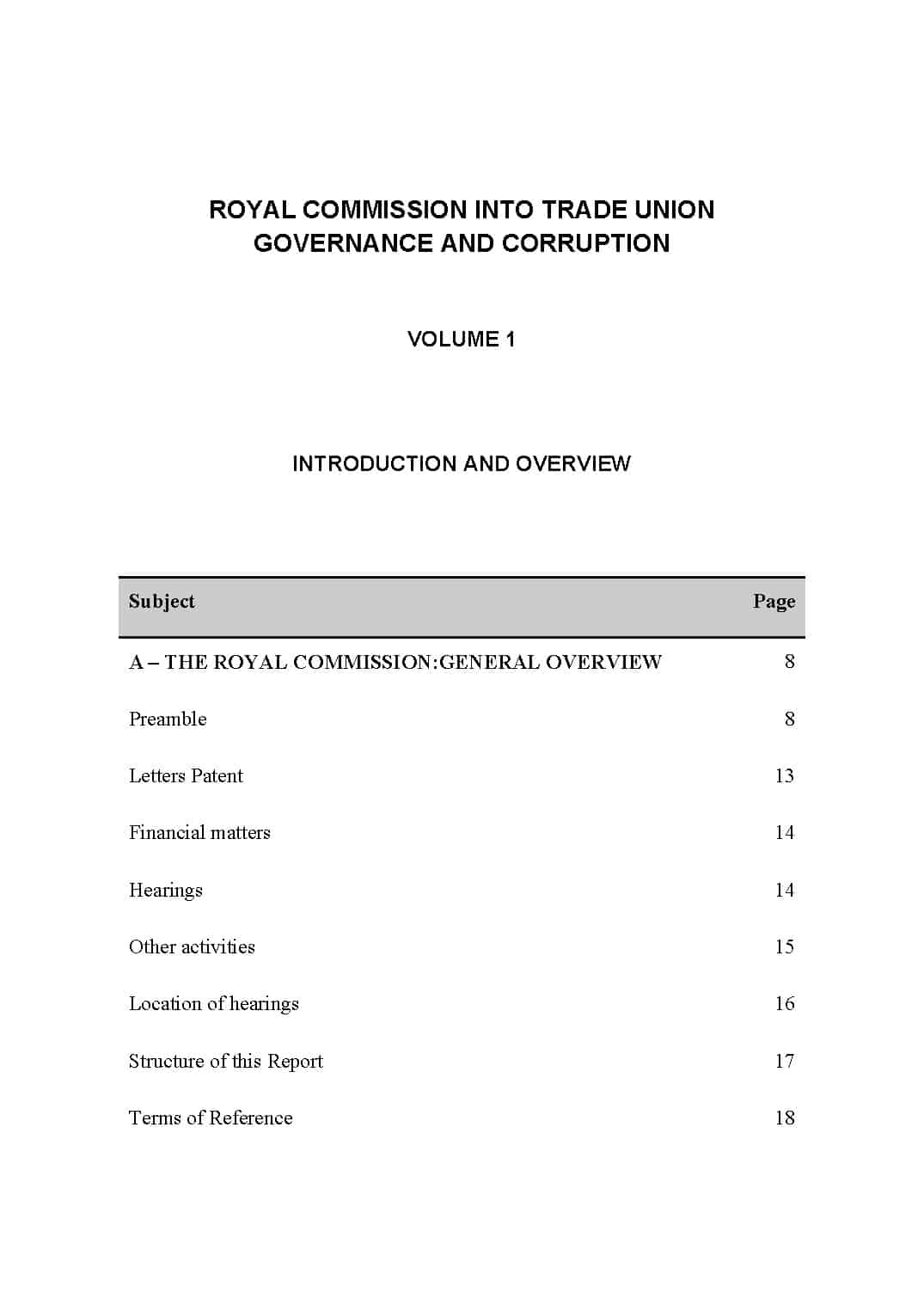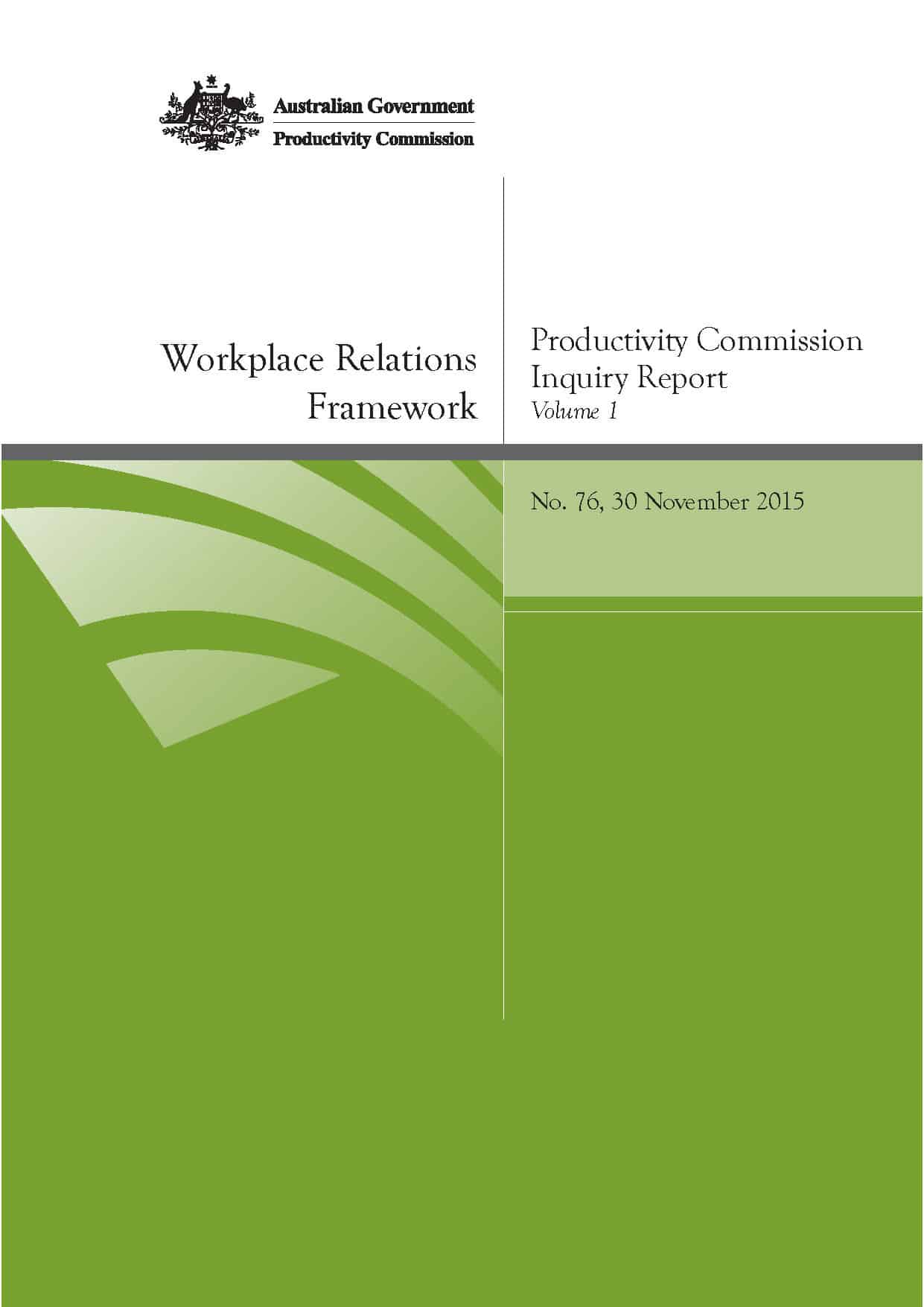Australia conducted a
Trade Union Royal Commission shows exploitation of OHS
 In January 2015, this blog said of Australia’s Royal Commission into Trade Union Governance and Corruption (TURC):
In January 2015, this blog said of Australia’s Royal Commission into Trade Union Governance and Corruption (TURC):
“Workplace safety has not been the focus of this Royal Commission but it is one of its victims”.
The Royal Commission’s final report was released on 30 December 2015, and it is time to look at the mentions of occupational health and safety (OHS), at least in Volume 1, and see how processes, decisions and reporting in the safety sector may change.
Red tape as a force for good?
“Red Tape” is often mentioned as a scourge on business growth and occupational health and safety (OHS) is frequently mentioned. But this week on Australian radio, red tape was described as a positive. It was a peculiar comment that should be noted in the red tape debate.
On ABC Radio’s AM program on 30 December 2015, in a discussion about vaccinations, Professor Raina MacIntyre, Head of the School of Public Health and Community Medicine at the University of New South Wales, stated: Continue reading “Red tape as a force for good?”
2015 in review
The WordPress.com stats helper monkeys prepared a 2015 annual report for this blog.
Here’s an excerpt:
The Louvre Museum has 8.5 million visitors per year. This blog was viewed about 120,000 times in 2015. If it were an exhibit at the Louvre Museum, it would take about 5 days for that many people to see it.
Talking about safety – old skills in new ways
Australia’s latest Prime Minister, Malcolm Turnbull, has a strong background in technology investment and is urging the country to embrace innovation. This has generated a focus on information technology start-ups but it may also create opportunities for occupational health and safety (OHS) professionals, if they are willing to change.
There has been a quick growth in
Where workplace bullying sits in Australia’s IR review
 Australia’s Productivity Commission (PC) has released its final report into the Workplace Relations Framework. Almost all media discussion has been about potential changes to penalty rates but, as mentioned in an earlier blog post, workplace bullying is part of the inquiry’s terms of reference, submissions were sought on this and the final report identifies one view on the current state of play.
Australia’s Productivity Commission (PC) has released its final report into the Workplace Relations Framework. Almost all media discussion has been about potential changes to penalty rates but, as mentioned in an earlier blog post, workplace bullying is part of the inquiry’s terms of reference, submissions were sought on this and the final report identifies one view on the current state of play.
The Australian newspaper has summarised the report as rubbish while The Age has described it as a “fair assessment“. These polarised interpretations say more about mainstream media ideologies than they do about the report, but they reflect the dichotomy between unions and business and the Left and the Right, and need to be remembered when reading their articles about occupational health and safety (OHS).
Volume 2 of the PC’s report includes a chapter (19) specifically addressing workplace bullying but the issue crops up throughout Volume 1 to illustrate the Fair Work Commission’s operations, where bullying fits in the workplace relations framework and even as bullying relates to breastfeeding.
Two apocryphal Santa safety tales
Safety Lesson 1 – Check Santa’s Constitution
As a child I lived across the road from a carpet factory. This huge factory had a wide paddock next door that, for a time, had two golf fairways and greens and a chicken farm. This paddock was the scene of the annual Christmas Party and, although my parents had no association with the factory, some of the neighbourhood kids wangled our way into the work’s Christmas Party.
One year the company chose to have Santa arrive by helicopter. We could hear the noise from some way off and a landing site in the paddock had been roped off. It didn’t take long for the noise from the children, already hyperactive on sugary drinks in a hot Australian Summer, to match the helicopter’s noise as the children ran to the roped area.
The helicopter lands, the propellers wind down as the children’s cheering increases. Continue reading “Two apocryphal Santa safety tales”

